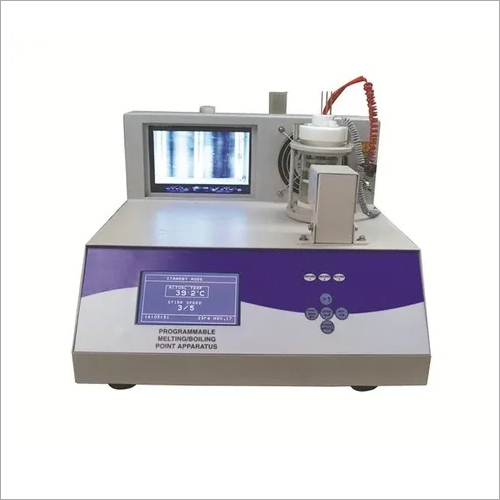

This temperature interval is said to be the melting range of the substance.ġ. The internal mechanism of the device records the temperature at which the sample begins to liquefy and the temperature when the substance gets fully melted. During the process, some of the samples do not get liquified, but instead, they undergo sublimation and get converted to gaseous form directly. The temperature at which the sample undergoes the five stages of melting is observed and recorded. The temperature of the heating block can be varied according to the density of the sample. The capillary tubes are then placed into the heating block of the melting point apparatus that provides the necessary temperature to melt the sample. This can be done by gently tapping the tube against a rigid surface. The powdered sample placed in the capillary tubes should be closely packed. A compact layer of approximately 2-4 mm in height of the properly ground sample is then placed into three or more thin glass capillary tubes. This is done because coarse and non-homogenous grains of the sample would receive an uneven amount of heat, and the device will not be able to provide accurate measurements. The dried sample is then crushed into fine powder. The substance is placed in a vacuum desiccator for one day to ensure that the sample does not contain moisture and is properly dried. The first step of this technique is the preparation of the sample. The sample is individually analysed and the average of the measurements is obtained to determine the exact melting point of the substance. The capillary tubes are then placed in the heating block. To determine the melting point of a sample with the help of the melting point apparatus, the sample is placed into multiple capillary tubes. The standard method used by melting point devices to determine the temperature at which an object melts is the capillary technique.

The percentage of light intensity shining through the capillary tubes containing the sample is recorded and compared to determine the difference in optical properties, thereby allowing the user to estimate the melting point of the sample substance. The intensity of light passing through the sample varies throughout the stages of the melting process of the substance and is easy to notice. The substance is said to be fully melted once it reaches the clear point or clear stage. At the meniscus point, a major portion of the sample gets melted, but it still contains some of the solid particles. In the collapse stage, the substance is mostly solid and contains a small amount of molten material. The moistening point is the initial stage of melting an element. The melting process of a substance can be categorized into five stages, namely, moistening, sintering, collapse, meniscus, and clear point. The change in light transmission is easily visible therefore, the working of a melting point apparatus is not much complicated. Working Principle of Melting Point ApparatusĪ melting point apparatus typically works on the principle of reflectance and transmittance of light falling on and passing through the sample. Disadvantages of Melting Point Apparatus.Safety Measures While Using Melting Point Apparatus.Working Principle of Melting Point Apparatus.Also, some of them are equipped with a mechanism that can record and display the melting point curve and determine the average value of the melting point. Most of the melting point apparatuses are able to display the initial as well as the final melting point of an element. The higher melting point of a substance implies that there exist high magnitude intermolecular forces. Pure elements generally have a sharp and high melting point, whereas impure and contaminated elements have a low melting point and take a comparatively longer time to meltdown completely. It is one of the most important and basic parameters to know about the nature of a substance, determine its purity, and characterize organic and inorganic compounds. Melting of a substance is generally obtained by heating it. The temperature at which the state of a substance changes from solid to liquid is said to be its melting point. A melting point apparatus is a laboratory device that is used to determine the melting point of an element with great precision and accuracy.


 0 kommentar(er)
0 kommentar(er)
